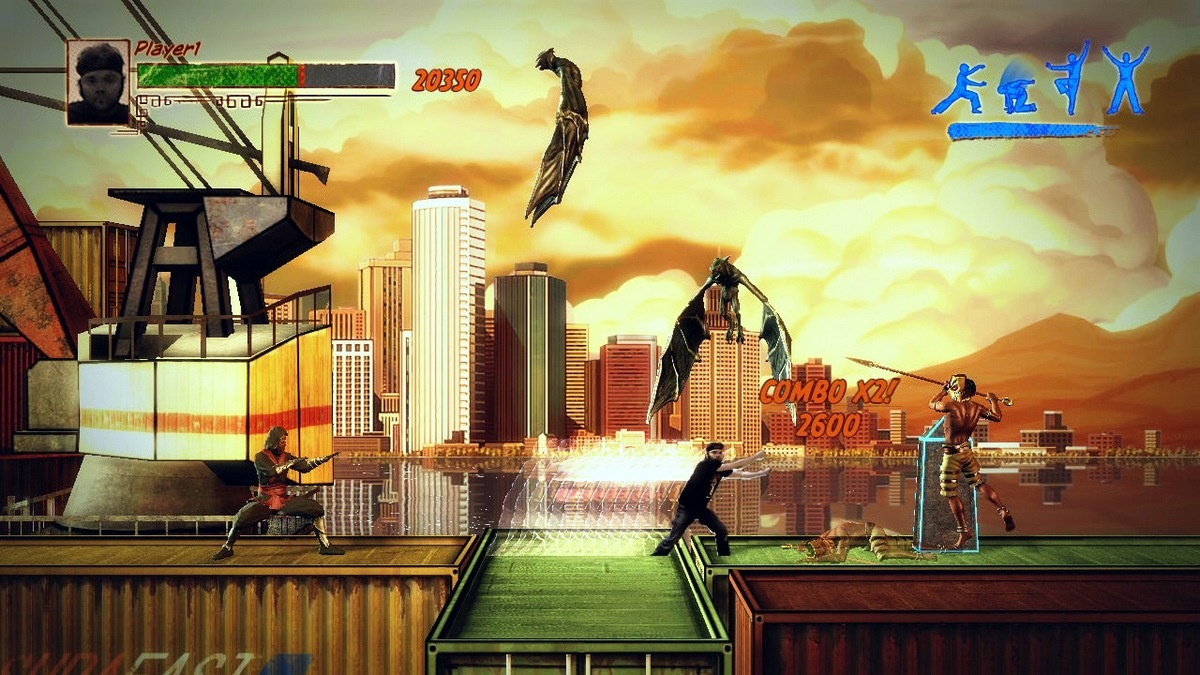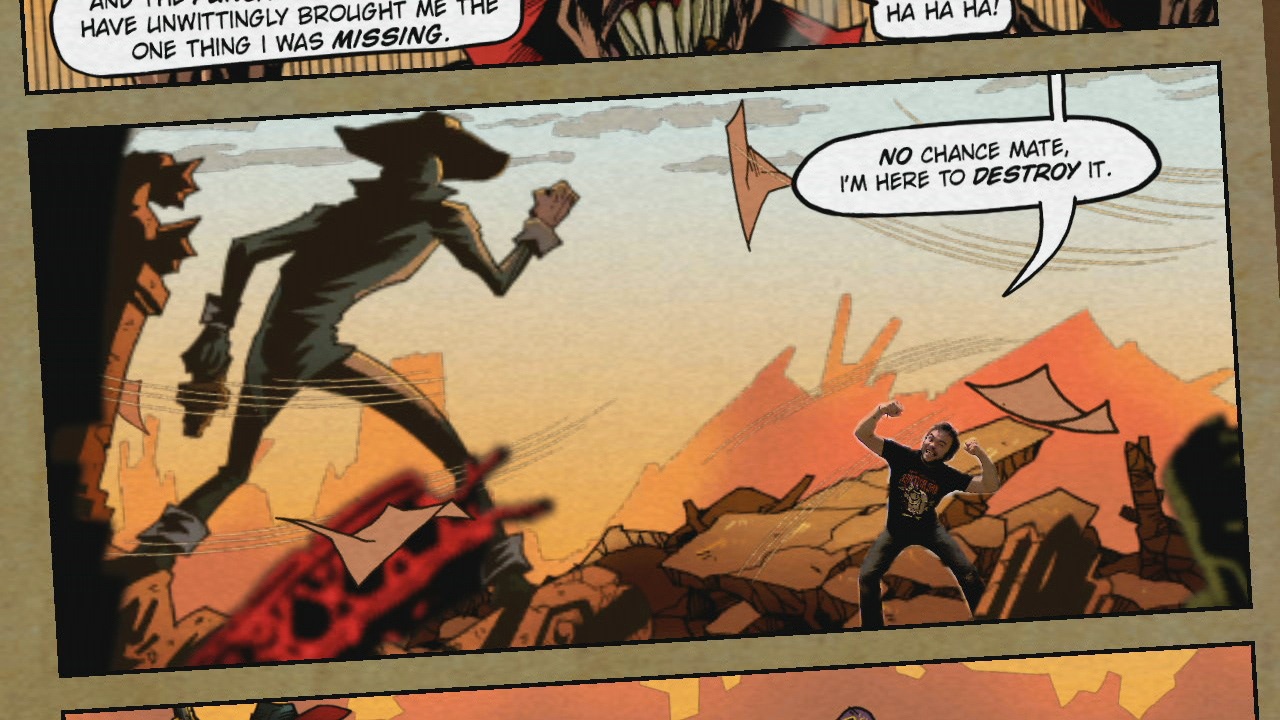By making your body the controller, the Kinect has promised the fulfillment of many fantasies, from being an action hero to a dancer on stage. Being a kung-fu superstar on the level of Bruce Lee is a fantasy many have had at one time or another, and Kung-Fu High Impact has some nice ideas about how to make that fantasy a reality by using the backdrop of a comic-book-style superhero story. Unfortunately, even in the tiniest sense, the game doesn't make you feel like a martial arts master but, rather, wears you out with imprecise controls and boring game design.

Kung-Fu High Impact uses the Kinect to scan your body and places your image directly into a 2D brawler, throwing enemies at you to beat up. All of your punches, kicks, blocks, and jumps translate directly to those in-game actions. On a very basic level, this works. You can duck under enemy attacks and throw a few punches without issue. There is some novelty to seeing yourself in the game this way. At best, you may feel like a digitized sprite in a low-budget Mortal Kombat knockoff, which is at least cool for a few minutes. The Kinect does a good job of knowing where you are and accurately keeping your body in the gameworld, and you can even use household objects as props to make your fighting style even sillier (we used a pair of socks as effective makeshift nunchaku). It also manages to keep background objects outside of the action, leaving the focus on you. Even in poor lighting conditions, the game keeps track of where you are, though you look like a shadow in-game and the effect isn't as appealing.
But the punching and kicking action never feels even remotely real; this is in part because of the fact that you're always looking at the screen instead of off to the side, which is where you imaginary opponent is located. The result has you awkwardly swinging and flapping your arms with your body twisted sideways, more or less hoping to win by accident. Punches are quicker and easier to pull off than kicks, so many battles are won by punching the air next to you as fast as you can unless your enemy is blocking or getting ready for a bigger attack, in which case you want to move away. There is no finesse to this combat--only flailing. As you progress through the short Story mode, you gain access to a handful of special powers that make things a bit more interesting--like a ground-shaking move that can make enemies drop their guard and an ability that slows down time--though the use of these powers is usually limited by your magic meter.
The more actions you try to perform, the more the controls start to fall apart. Sometimes special moves don't work when you want them to and sometimes punches and kicks don't register correctly. The worst part, though, is that even moving around the relatively small levels can be a chore. You can step from side to side easily enough, but you can't move large distances effectively without using a super punch special move (earned at the beginning) that allows you to move across the screen faster. Because this move is both a powerful punch and the best way to travel, you perform it over and over again. The most aggravating movement is the flip, which is generally the only way to reach high places or jump behind enemies that can't be effectively attacked from the front. This move requires you to jump and arch your back, as if you are flipping backward away from an enemy. This motion only registered correctly for us about half of the time and often resulted in lost health or failed missions.
At least, the aesthetics of the game tend to be nice. The story, while not exactly gripping, is a generic but effective superhero plot. The comic-book imagery is generally well done, which comes into play most during the cutscenes. Between each story stage, you are given several poses and expressions to match, which the game takes a picture of and later pastes into the story's comic-book panels. This works well and the effect is pretty cool, helping you feel like you're really part of the comic being shown to you.

There are a few modes outside of the single-player story, but they operate the same way. Survival mode drops you into a stage to see how long you can last before dying (either by losing all your health or by real, physical exhaustion). Mayhem Designer allows you to choose exactly which enemies you want to fight and where while giving you a small selection of other options to tweak, such as speed. Multiplayer deviates from the formula ever so slightly by allowing friends to use gamepads to control enemies in the game while the main Kinect player fights them. The laughs in this mode will probably be more at the Kinect player's expense than from actual fun being had.
It's tempting to think that this game might have been better if it took video or pictures of you performing each motion and then let you play as your digitized self with a standard controller. However, even with precise controls, Kung-Fu High Impact wouldn't be very exciting. Environments are bland and uninteresting, enemies are brainless and uninventive, and the boring Story mode is over within a couple of hours of playing at most. In fact, without the motion-gaming hook, Kung-Fu High Impact might be an even less appealing product than it is now because there's at least a little bit of goofy fun to be had by pretending to fight monsters in your living room. But as a retail Kinect product, there is too much in the way of either frustrating or boring content. You should do your kung-fu fighting somewhere else.